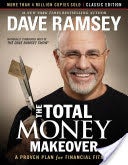Raiding Your 401(k) Piggy Bank? Here's What It Could Cost You

These days it pays to be smart about money. That's why it's important to take this wise counsel from financial expert Dave Ramsey.
When you're pinching pennies and life throws you a curve ball, all those zeroes at the end of your nest egg can be tempting. Treating your 401(k) like a piggy bank may seem like a painless way to make ends meet. But is dipping into tomorrow to fund today all it's cracked up to be?
Let's take a look.
The Cold, Hard Cash-Out
When you leave a job you have three options: Leave your 401(k) money where it is, roll it over into an IRA or cash it out. Unfortunately, many young professionals take the easy way out, and don't consider the long-term costs. A recent study by Fidelity found that 44 percent of savers in their twenties took their 401(k) cash and ran.
When you're just getting started, it's easy to think of your retirement savings as chump change in the grand scheme of things. After all, you have your whole life ahead of you to make your nest egg count, right?
Wrong.
The funny thing is the younger you are, the more you have to lose. Why? The power of compound interest over time. The longer your money sits, the more it multiplies.
Consider this example. Joe is 25-years-old and has $5,000 in his nest egg. He changes jobs and decides to cash out his 401(k). After $1,250 in taxes and a $500 early withdrawal penalty, Joe's left with $3,250 to spend. He uses the money to outfit his new apartment, transforming it into a rock-star bachelor pad.
That sounds pretty sweet, but what if Joe had rolled the $5,000 over into an IRA and invested in good growth stock mutual funds instead? For one thing, he'd skip the $1,750 in taxes and penalty fees. And at 65, Joe's "meager" $5,000 could be worth between $226,000 and 465,000. That's a huge drop in the retirement bucket!
Joe's potentially losing out on nearly a half million bucks just to woo the ladies and impress the guys with leather furniture and a big home theater system. Maybe he can trade those in for a few cases of Alpo when he retires. He'll need something to feed him in his golden years!
Borrowing From Your Own Nest Egg
Let's move on to another major drain on retirement accounts: the 401(k) loan. With an average outstanding balance of $7,153, these loans are most prevalent among workers in their forties, according to the Employee Benefit Research Institute (EBRI).
>In a 401(k) loan you borrow money from your own 401(k) account, and pay it back with interest. Most plans allow you to borrow up to 50 percent of your account's value — up to $50,000. But if you think borrowing your own money is harmless, think again.
Here's a look at the math.
At 40, Jane brings home $50,000 a year and has $50,000 in her 401(k) account. She wants to update her kitchen, so she borrows $10,000 at 6 percent interest for five years. To make room for her loan payment, Jane drops her monthly 401(k) contribution from $625 to $432, but continues to receive the full employer match at 5 percent of her income.
So what kind of dent does the loan put into her savings? According to the National Center for Policy Analysis' 401(k) Borrowing Calculator, Jane's loan could cost her $121,000 to $198,000 by the time she retires at 65. If she stops her contributions and her employer match over the loan period, it could multiply her loss to a whopping $491,000 to $778,000. And those figures assume she pays the loan back in full on time.
When you leave the company your 401(k) loan balance is due within 60 days. Failing to pay the loan off means it's tagged as an early withdrawal, and you pay dearly in taxes and penalties. If you think that won't happen to you, consider this. A recent study by Pension Research Council found that 86 percent of workers who leave their job with an outstanding 401(k) loan balance end up in default.
Avoid the 401(k) Tap Trap
So what's causing workers to tap into their life savings? According to a study by TIAA-CREF, paying off debt was the number-one reason workers took out a 401(k) loan, followed by emergency expenditures. Something's wrong with that equation. That's why financial expert Dave Ramsey recommends establishing a firm financial foundation before you save for retirement. Here's how to do it:
- First, get $1,000 in a starter emergency fund so you don't have to use debt to pay for a new alternator in your car.
- Next, pay off all non-mortgage debts to free up your most powerful wealth-building tool — your income. ·
- Then, stockpile three to six months of expenses in your emergency fund. With this, you can handle just about anything life throws your way without dipping into your 401(k).
Once you've done these things you're ready to invest 15 percent of your household income in tax-advantaged retirement accounts, like a Roth 401(k) or Roth IRA. Work with a financial advisor to outline a plan for reaching your goals. A true pro will help you stay on track when life puts your nest egg at risk!
*Used with permission from daveramsey.com. For more information, visit www.daveramsey.com/elp.






